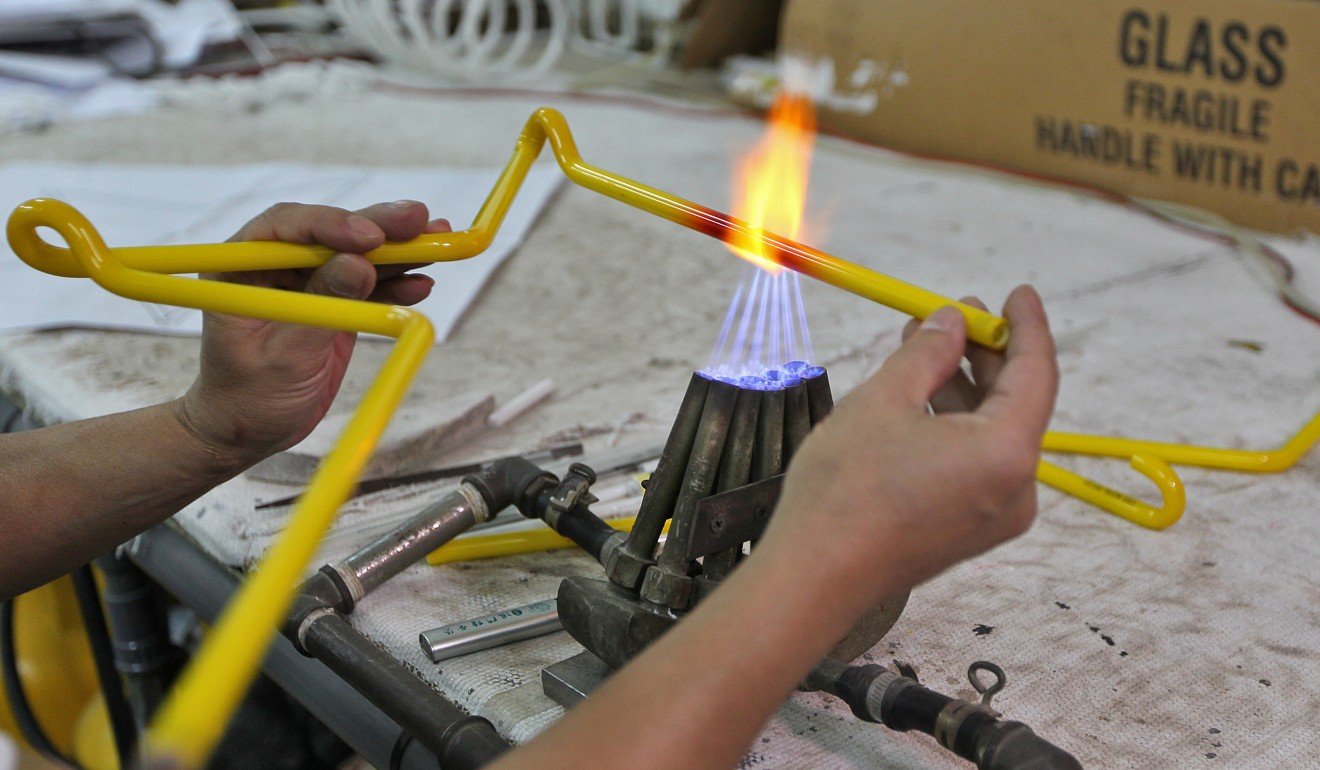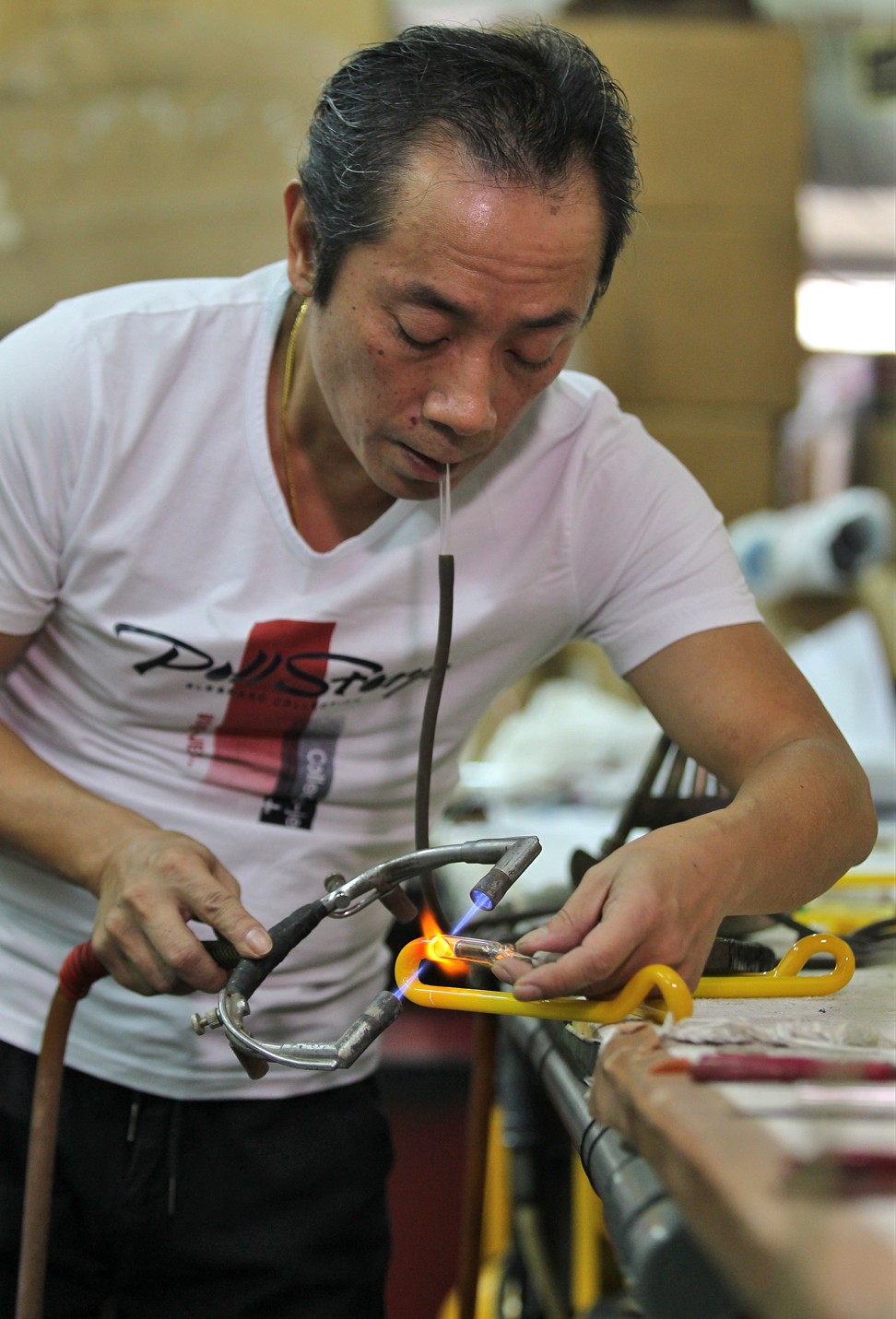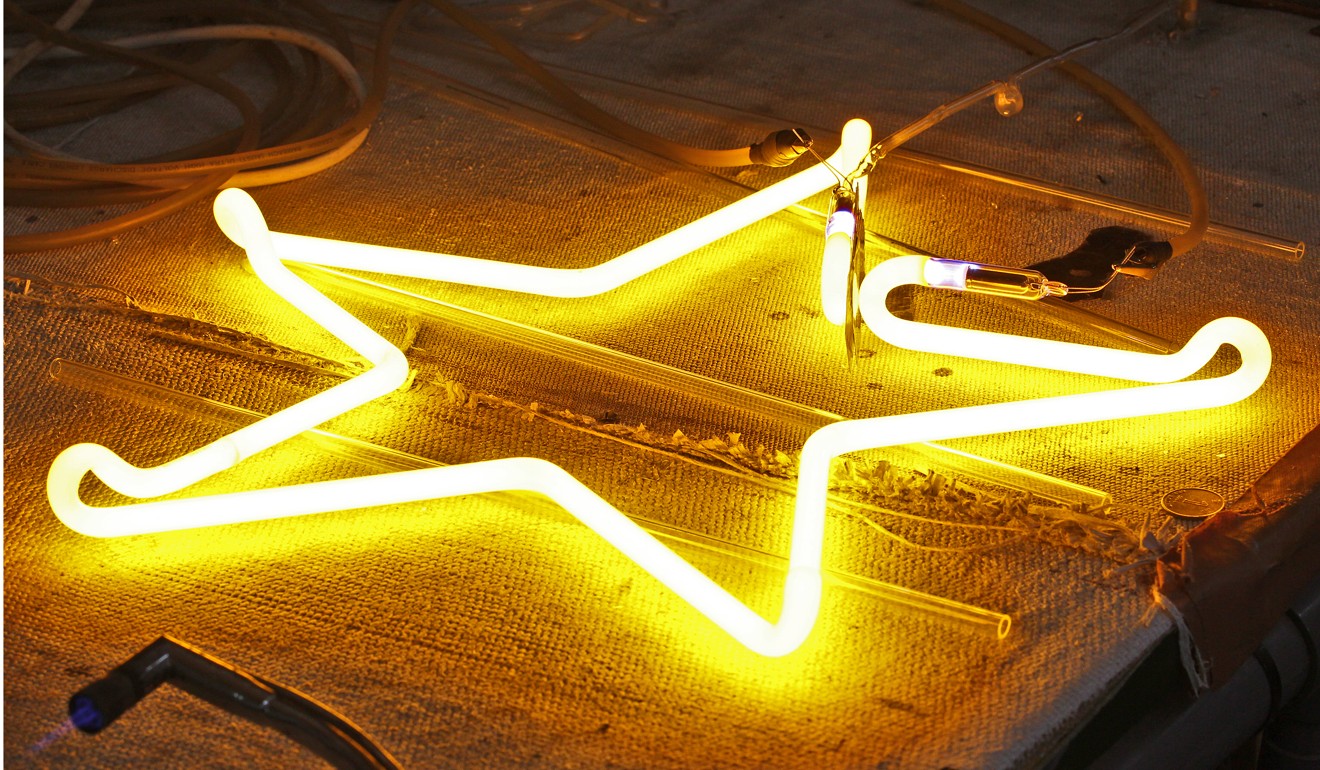
Video | Meet one of Hong Kong’s last neon sign makers and learn why LED lights haven’t put him out of business
Wu Chi-kai started in the business 30 years ago and, despite newer technology and government regulations, is still kept busy today. His craft, and the city’s neon light culture, is a focus of this month’s Lumieres Hong Kong event
A festival of light in Hong Kong this week will, among other things, champion the city’s neon signage.
As well as teaming up with artists to create 16 works at sites on Hong Kong Island and in Kowloon, Lumieres Hong Kong, which runs from November 23 to 25, has joined forces with the Hong Kong Neon Heritage group to draw attention to the rapid disappearance of those icons of city culture in the era of LED lights.
One of the few neon light sign makers left is Wu Chi-kai, 50, who has been in the business for over 30 years. His father introduced him to the industry when Wu was 17 years old and his focus to begin with was just on making the signs.
“My father didn’t let me do what he was doing – installing signs – because it can be very dangerous climbing up on the bamboo scaffolding,” he says.
At the time, Hong Kong was experiencing a golden age of neon signs that first started booming in the 1970s. Nathan Road in Tsim Sha Tsui and Lockhart Road in Wan Chai were particularly well known for the colourful neon signs suspended above the streets.
“When Hong Kong was prospering, all the shops that had ground-level locations wanted to have neon signs to lure customers in. At the time, the government didn’t have by-laws on size restrictions for the signs. We just made them as big as the clients wanted them,” Wu says.
“Back then on Nathan Road, you could see signs that were horizontal and vertical. This is really special to Hong Kong. I have been abroad, not to many places, but from what I’ve seen, the neon signs are usually vertical and are attached to the wall; they wouldn’t be sticking out horizontally.”

The workshop Wu worked at employed around six people to design signs and another five or six to install them. But business was so busy that he recalls his boss regularly teaching him and two other apprentices new things so that they would stay.
Sign designs were typically of existing company logos – Wu says they would copy them onto paper and then make the signs as large as the clients wanted them.
“To make a neon sign, the design is important; it can start small,” Wu explains. “Once we have a small design, we can make it as big as the client wants it, following a ratio. We’d copy the bigger design on paper and then cut it up into smaller pieces and make the individual parts in neon and then put them together after.” The trick is to flip the designs and make the shapes backwards, so the twists and joins are on the side that people on the street can’t see.

The glass tubing is twisted and turned at very high temperatures heated by gas heaters. Wu attaches a rubber tube to the glass tubing and blows into it periodically so that the curved area keeps its shape and doesn’t cave in. Once it has been manipulated into the right shape, electrodes are installed in each end. Air extraction equipment is then used to create a vacuum which removes air and impurities from the glass tubes.
Once that’s done, either neon or argon gas is pumped in to create the colours – neon for red, argon for blue. Other colours are made by using different coloured glass tubes, while powder can be added to make, say, a red light turn pink.
If you ask me, I think LED lights are good – if it’s something neon lights can’t do
Wu says a well-made neon sign should last several years, but then it can start to look shabby. The appearance can also depend on where the sign was made.
“If the sign wasn’t made in Hong Kong, the materials used would be different. We use glass tubing from the UK and the United States,” he explains. “But the large neon Panasonic sign on top of Star House in Tsim Sha Tsui, for example, was made in Japan using Japanese materials, then installed by Hong Kong people. After a while the lights stopped working and had to be repaired here. We use different materials from the Japanese, so now the colours aren’t exactly the same. This is why some neon lights are ugly, with patches here and there.”
Hong Kong’s tiny understairs shops: artisan mahjong tile maker on the dying art of hand carving in the machine age
The decline of neon began around 2000, Wu says, when the owners of neon sign workshops started taking orders to the mainland where they could be made cheaper. This was around the same time that LED lights were introduced, as well as when the Buildings Department began putting restrictions on signs, taking down those that were deemed a safety risk.
“If you ask me, I think LED lights are good – if it’s something neon lights can’t do,” Wu says. “They are convenient and they can be smaller, and when it comes to changing colours, LED lights are better. They don’t use much electricity too, so it’s a good thing.”

There are several notable places left in Hong Kong that still use neon signs, such as The Center and the Bank of China Tower in Central, and the Manulife sign by the Cross-Harbour Tunnel. Meanwhile, in places like Tsim Sha Tsui, Wan Chai and Mong Kok, only a handful of signs are left.
These days Wu keeps busy with small requests, such as making neon signs that are placed inside shop windows or helping local artists with their projects, teaching some of them how to make neon lights.
Hong Kong’s tiny understairs shops: the Elgin Street tailor who treasures his craft and a sense of community
Despite there being fewer neon signs in Hong Kong, Wu is still optimistic about the future. “I don’t think Hong Kong’s neon culture will go away. If people want to have neon, they can get it done. When the demand disappears, then there is no point in continuing this work. There will always be people who need neon.”
Lumieres Hong Kong , November 23 to 25, 7pm to 11pm, 16 sites in Central, Sheung Wan and Kowloon. These include: Man Mo Temple, PMQ, Duddell Street, Chater Garden, Edinburgh Place, Hong Kong City Hall, Clock Tower and D2 Place Two.
For more information visit www.lumiereshk.com.

